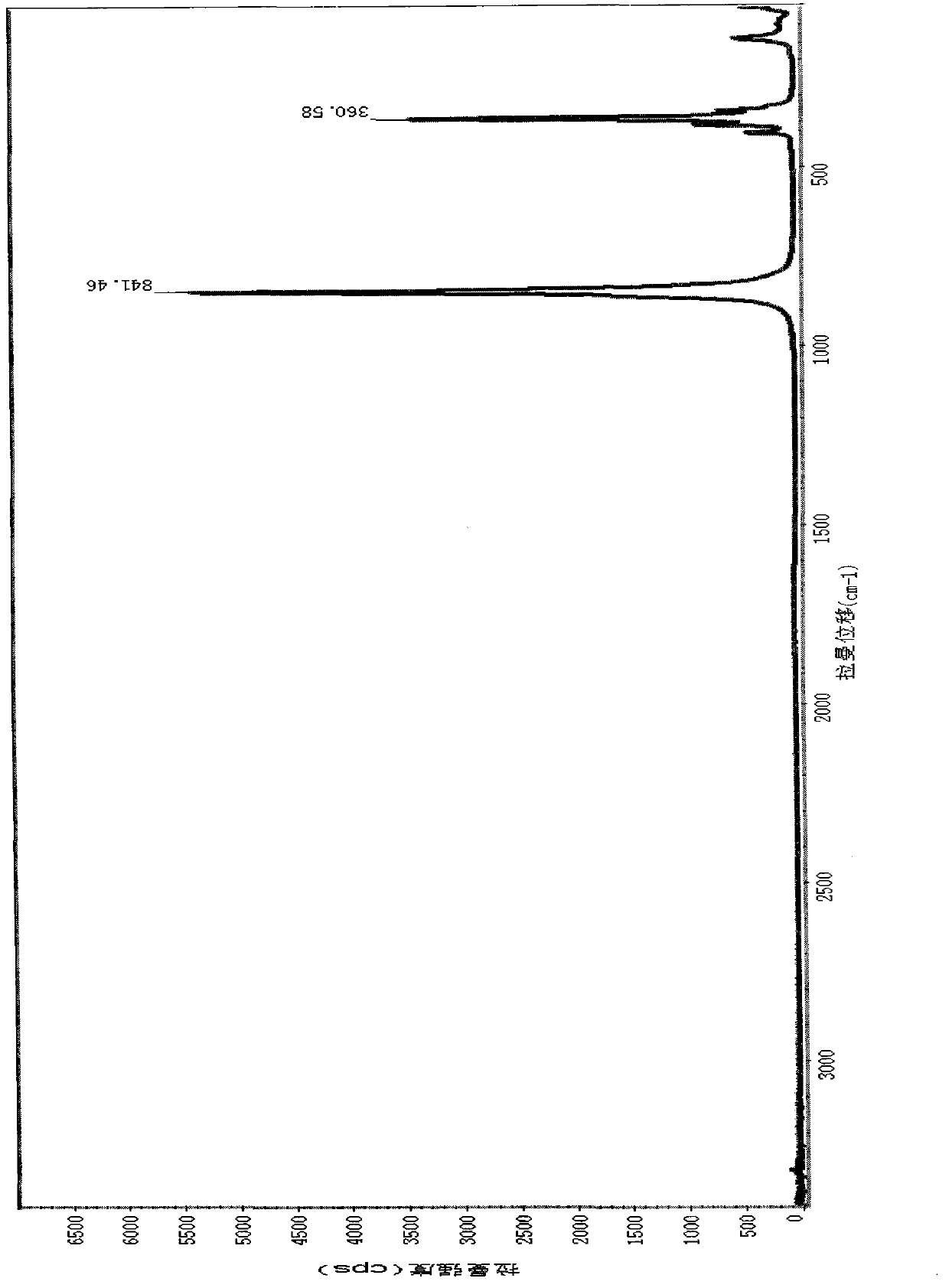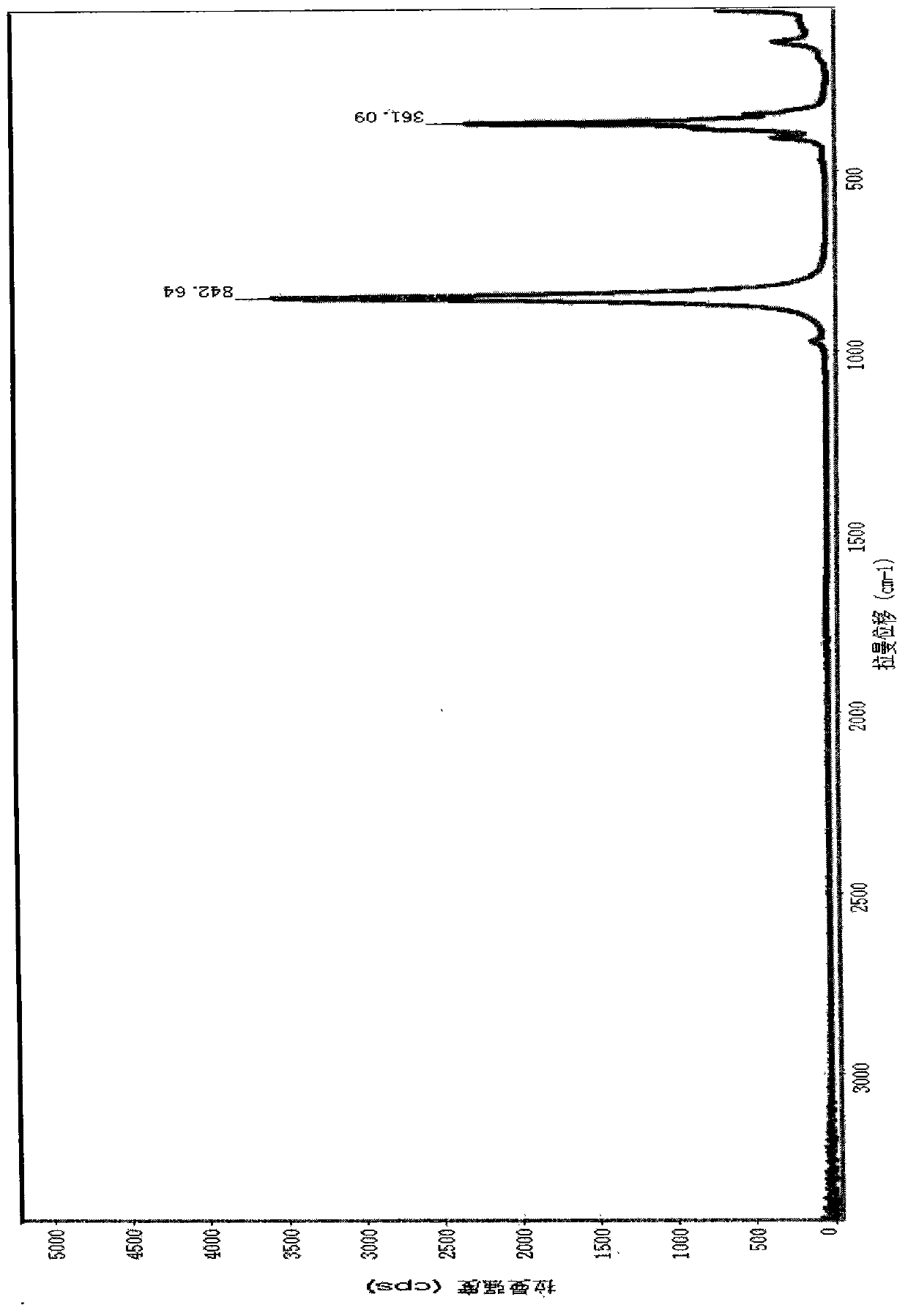Method for rapidly detecting pigment green in tea through using laser-Raman spectrum technology
A technology of laser Raman spectroscopy and art green, which is applied in the detection field, can solve the problems of complex analysis steps and cannot solve the qualitative and quantitative problems of art green in tea, and achieve the effect of clear and sharp Raman spectrum peaks
- Summary
- Abstract
- Description
- Claims
- Application Information
AI Technical Summary
Problems solved by technology
Method used
Image
Examples
example 1
[0049] a) Using a ThermoFisher DXR laser micro-Raman spectrometer with an excitation wavelength of 780nm.
[0050] b) Make a Raman spectrum for each component of Art Green. Because art green is made by blending lead chrome yellow and iron blue or phthalocyanine blue, make Raman spectra for various monomers (lead chrome yellow, iron blue, phthalocyanine blue) that make up art green, and find out Their characteristics absorb.
[0051] refer to Figure 1 to Figure 5 , is the Raman spectrum of several lead chrome yellows, in which there are 842(±3cm -1 )cm -1 at the characteristic peak; Image 6 It is the Raman spectrum of phthalocyanine blue, and its characteristic absorption is 1524(±3)cm -1 、1339(±3)cm -1 ; Figure 7 It is the Raman spectrum of iron blue, and its strong characteristic peak is 2150 (± 3cm -1 )cm -1 . It can be seen from the Raman spectra of the monomers (lead chrome yellow, iron blue, phthalocyanine blue) that make up art green that their characteristi...
example 2
[0054] Example 2: Drawing of lead chrome yellow standard curve
[0055] a) Preparation of blank tea leaves: clean and dry green tea was pulverized and passed through a 100-mesh sieve.
[0056] b) Weigh 0.100 g of medium chrome yellow (accuracy 0.0001 g), and 99.90 g (accuracy 0.0001 g) of green tea powder prepared in a), and mix well. The concentration of this standard product is 1000 mg / kg.
[0057] c) Weigh 0.01g, 0.05g, 0.10g, 0.15g, 0.20g, 0.25g, 0.3g of the standard product in b), add the blank tea powder in a) to 10g respectively, and mix well to obtain a concentration of Standard series of 1, 5, 10, 15, 20, 25, 30mg / kg.
[0058] d) Use the blank tea powder in a) as a blank, and measure the Raman intensity with the standard series in c), using a ThermoFisher DXR laser micro-Raman spectrometer with an excitation wavelength of 780nm, and use the quantitative analysis software of the instrument to make a standard curve for the concentration. Such as Figure 9 , it can be...
example 3
[0059] Example 3: Drawing of Iron Blue Standard Curve
[0060] a) Preparation of blank tea leaves: clean and dry green tea was pulverized and passed through a 100-mesh sieve.
[0061] b) Weigh 0.100g (accuracy: 0.0001g) of iron blue, and 99.90g (accuracy: 0.0001g) of green tea powder prepared in a), and mix thoroughly. The concentration of this standard product is 1000mg / kg.
[0062] c) Weigh 0.05g, 0.10g, 0.15g, 0.20g, 0.25g, 0.30, 0.35g of the standard product in b), add the blank tea powder in a) to 10g respectively, and mix well to obtain a concentration of 5mg / kg standard series.
[0063] d) Use the blank tea powder in a) as a blank, and measure the Raman intensity with the standard series in c), using a ThermoFisher DXR laser micro-Raman spectrometer with an excitation wavelength of 780nm, and use the quantitative analysis software of the instrument to make a standard curve for the concentration. Such as Figure 10 , it can be seen that there is a good linear relatio...
PUM
| Property | Measurement | Unit |
|---|---|---|
| correlation coefficient | aaaaa | aaaaa |
Abstract
Description
Claims
Application Information
 Login to View More
Login to View More - R&D
- Intellectual Property
- Life Sciences
- Materials
- Tech Scout
- Unparalleled Data Quality
- Higher Quality Content
- 60% Fewer Hallucinations
Browse by: Latest US Patents, China's latest patents, Technical Efficacy Thesaurus, Application Domain, Technology Topic, Popular Technical Reports.
© 2025 PatSnap. All rights reserved.Legal|Privacy policy|Modern Slavery Act Transparency Statement|Sitemap|About US| Contact US: help@patsnap.com



